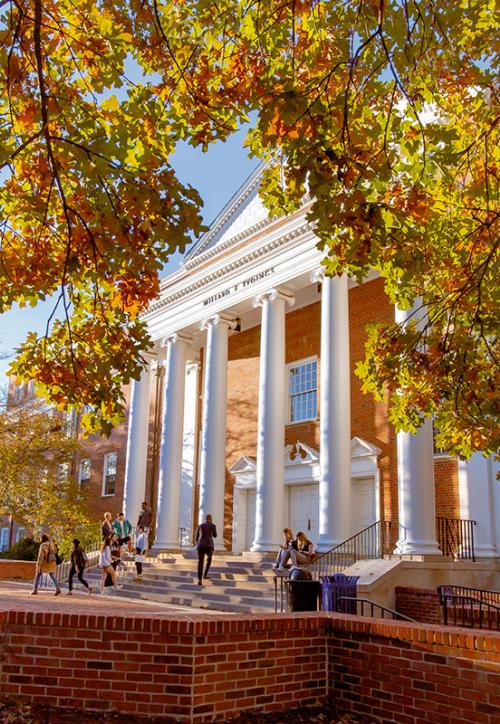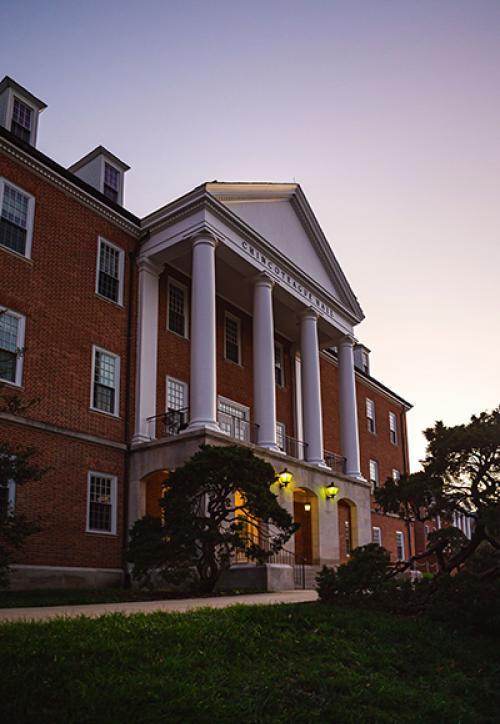ANTH’s Ireland Field School Returns After a Three-Year Hiatus
For the first time since Covid-19, this summer saw the return of the Department of Anthropology’s Lackaghane, County Cork, Ireland education abroad opportunity led by Associate Professor Stephen Brighton, called “The Archaeology of Early Modern Ireland."
Brighton has been running six-credit field schools, open to all majors, in Ireland since 2015. In collaboration with the Skibbereen Heritage Center, from 2015-2018, students excavated six one-room cabins belonging to families who lived, and died, during the potato famine. From 2018 onward, Brighton’s students have been excavating an 1861 cabin that was set on fire by neighbors during a dispute.
“For archaeology it was great because the roof was made of thatch, so when it burned and collapsed, it formed a seal—we call it the Pompeii effect—over all the items that were there. So, students in 2018 and 2019 are able to figure out how they used space in the cabin; where they ate their meals, where they socialized, where the farm was and how they got to it because all the tools are along the back wall, etc.,” he explained. “This year we were working outside the cabin, looking for the footprint of a pre-famine cabin site. Most people think archaeology is about gold and treasure and cool pots, which it is, but what I was teaching students this year was that some of the most fascinating stuff we can find are the things like the remnants of a foundation or a passageway or wall that we didn’t know existed.”
Students like Emma Weikert, a senior anthropology major, still managed to find “treasure” though, like a blue transfer-print ceramic container, aka whiteware, that she noted had evidence of a repair hole.
“Whether this dish was expensive, sentimental, or some other explanation is unknown—but what is known is that this was useful to the family in some capacity,” she said. “This piece of ceramic had such significance to the family that used it that it was worth going through the trouble of repairing.”
Brooke Ayers, a junior anthropology and geographical information sciences major who used Anthropology Student Experience Funds in order to attend the trip, worked closely with Weikert in the field. Ayers described finding broken pieces of bottles, redware ceramics, whiteware ceramics, and small pieces of glass. Each discovery was more interesting than the last, she said, and by the end, the group was able to conclude that they were digging in what individuals used as a midden, or trash heap.
“It is a lot like a puzzle without clear directions on what the final picture should be,” Ayers said of the experience.
Students also had the chance to explore the culture of Lackaghane, as they had the opportunity to stay in holiday homes, aka vacation homes, with local families. Adam Smith, a senior anthropology major, said, “My favorite part of the trip was getting to explore the town and making friends with the family who owned the holiday homes we stayed at, the Fitzgeralds.”
Smith added that while he’s still a bit unsure, he’s considering pursuing an anthropology career that could involve field work.
Ayers—who always knew her future lay in fieldwork—and Weikert expressed similar sentiments.
“This trip was a huge step outside of my comfort zone, as I had never traveled alone, let alone outside the country alone before,” Weikert said. “But this experience was unforgettable! This trip solidified my decision to make a career out of archaeology, and I learned archaeological methods that I know will be integral to my future career.”
This article was written by Sofia Appolonio, JOUR '26. Photo provided by Stephen Brighton.
Published on Wed, Nov 15, 2023 - 3:00PM



